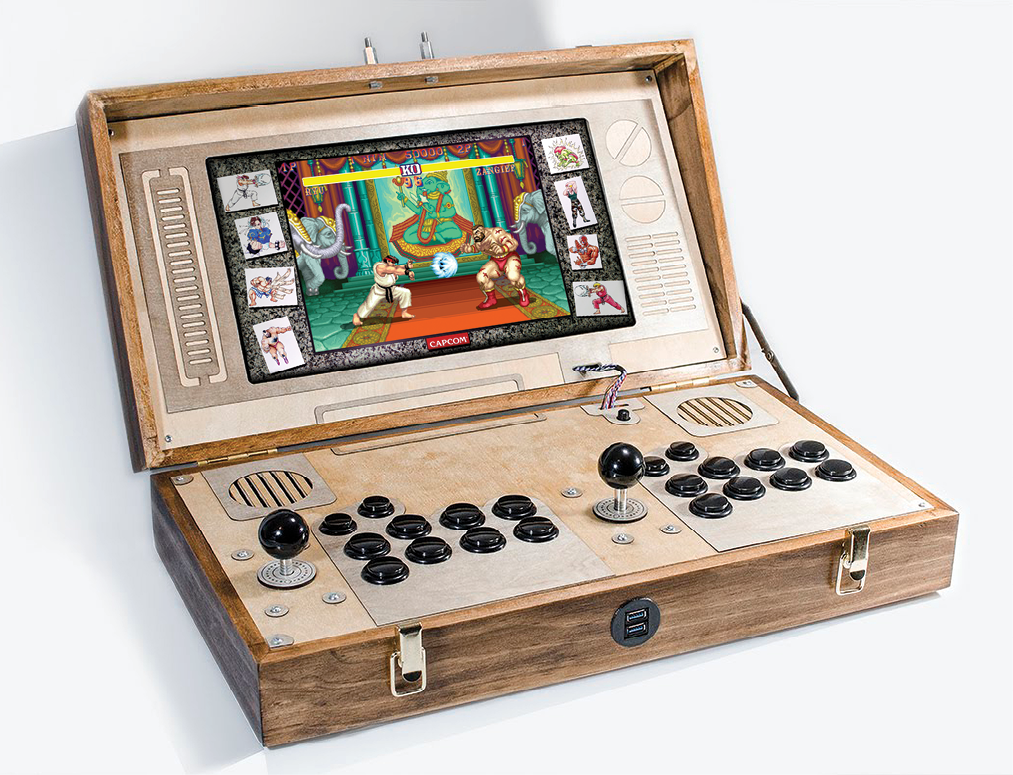Not long ago my brother asked me to help him convert a glass coffee table into a cocktail arcade machine. I was already familiar with RetroArch and emulation in general, but this was the first time I worked with a Raspberry Pi. It was so easy to set up, and so much smaller than I expected, that I thought to myself, “I could do more with this.” That build was pretty simple, but it gave me an itch I could not resist. I resolved to build a system into a disused suitcase that could be folded up and carried.
I kept an eye out for an appropriate folding case, but after a couple of weeks of looking I was at a dead end. Every box I came across was too small, too big, too shabby, too expensive, too thick, too thin, and so on. I realized I would probably just have to make it myself. Thinking more about it and drawing out a design in my head, I found myself with a list of design requirements:
- Foldable
- Light enough to carry
- Small enough to move easily
- Big enough to be functional
- Well-made and well-finished wood construction
This was becoming a pretty ambitious project given that I had no tools of my own, no experience working with wood, and only a passing knowledge of electronics. Fortunately there happened to be an amazing makerspace really close to me called Reforge Charleston . After joining, and with guidance from a few of the members (and a lot of YouTube videos), I taught myself basic woodworking, how to use the 3D printers, laser cutters, CNC machines, and everything else I would need to make my arcade box. Here are the main elements of what it entailed.





